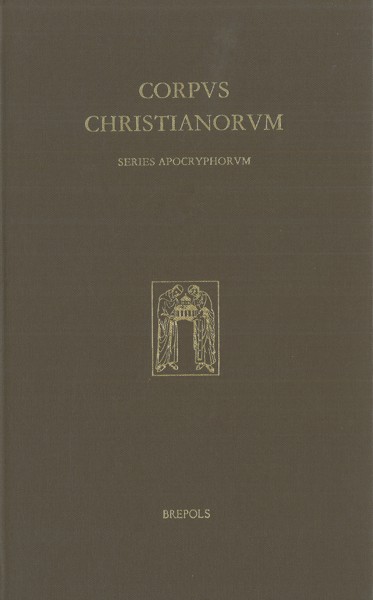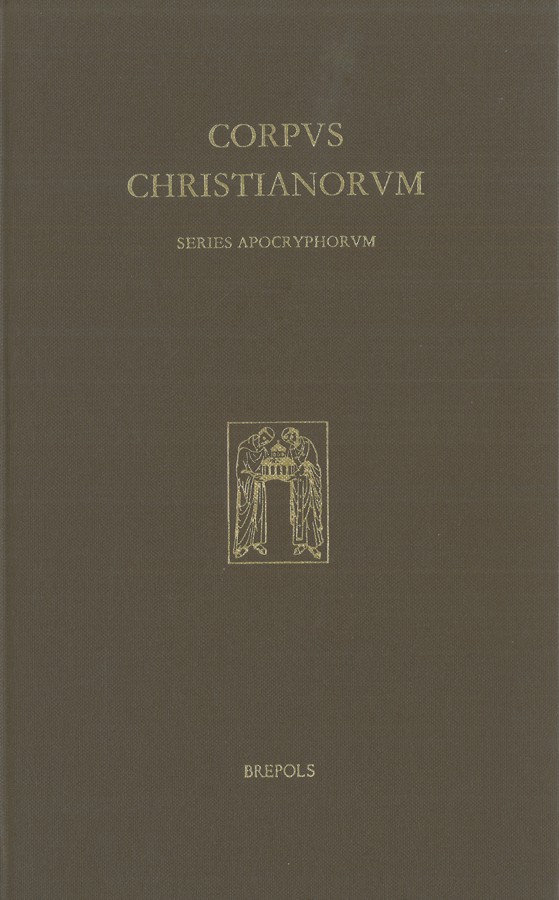
Apocrypha Armeniaca: Acta Pauli et Theclae, Prodigia Theclae, Martyrium Pauli
Valentina Calzolari (ed)
- Pages: 738 p.
- Size:155 x 245 mm
- Illustrations:2 b/w, 3 tables b/w.
- Language(s):Armenian, Italian
- Publication Year:2017
- € 395,00 EXCL. VAT RETAIL PRICE
- ISBN: 978-2-503-56986-4
- Hardback
- Available
"Le dernier volume paru dans le Corpus Christianorum. Series Apocryphorum fait honneur à la littérature apocryphe arménienne avec l’édition critique et la traduction italienne de trois textes relevant du cycle paulinien, les Actes de Thècle (CANT 211.III), les Prodiges de Thècle et le Martyre de Paul (CANT 211.V). (...) Fruit de longues années de recherches et de travail, l’opus magnum de V. Calzolari est une contribution majeure, si ce n’est essentielle, à l’étude des textes apocryphes arméniens." (Damien Labadie, dans Apocrypha 29, 2018, p. 222-225)
"Although we are presented to these three monumentally important texts in Armenian and in a modern Western European language, the book begins with a well-nigh exhaustive introduction (amounting to some 160 pages) to the Acts of Paul, to Thecla as a person and her influence as a female apostle and to the cult of Thecla in Armenia from the 5th to the 15th centuries. (...) We congratulate author and publishers for this handsome, scrupulously meticulous and worthy book. All those interested in the history, contents and significance of this apocryphon and in Armenian literature more widely should have Prof. Calzolari’s volume to hand." (J.K. Elliott, in Novum Testamentum, 61, 2019, p. 103-106)
"Ce premier volume d'édition des apocryphes arméniens dans la Series Apocryphorum du Corpus Christianorum, publiée sous les auspices de l'Association pour I'Etude de la Littérature Apocryphe.Chrétienne (AELAC), dont Valentina Calzolari est la présidente, est un modèle du genre." (Caroline Macé, dans Byzantion 88, 2018, p. 456)
"Il faut saluer l'étendue et la solidité des informations contenues dans ce monument d'érudition, qui a non seulement le mérite de nous faire connaître les textes et toutes leurs variantes, mais aussi de décrire l'enracinement de ces apocryphes dans la tradition arménienne et d'examiner tous les problèmes d'histoire et de civilisation liés à leur traduction et à leur réception en Arménie." (J.-P. Mahé, dans Revue des Etudes Arméniennes, 39, 2020, p. 630-632)
Valentina Calzolari is Professor of Armenian Studies at the University of Geneva. She is currently President of the Association pour l'Etude de la littérature apocryphe chrétienne (AELAC) and of the Association Internationale des Etudes Arméniennes (AIEA). She is the author of "Les apôtres Thaddée et Barthélemy. Aux origines du christianisme arménien" (Collection Apocryphes 13)
This volume comprises an extensive study on the legend of Thecla in the Armenian tradition, as well as a philological analysis of Armenian sources on Thecla and on the Martyrdom of Paul compared to parallel texts in other languages (Greek, Syriac, Latin, Coptic). In this volume, the critical edition of Armenian texts is published in combination with a thoroughly commented translation. In addition to a general introduction on the Acts of Paul, the volume also contains an overview of the cycle of Paul in Armenian, and of the history of the research on the field of the Armenian Christian Apocryphal Literature.
When one attempts to piece together the itinerary by which saint Thecla fully established her position in the religious environment of ancient and medieval Armenia, literary and liturgical accounts may be found spanning almost ten centuries, from the fifth to the fourteenth century. To support this research, this monograph takes into consideration the ties between Syriac and Armenian Christianity in the fifth century; the ancient Armenian historiography; the correlation between ancient Byzantine and Armenian literature of the twelfth century; and, finally, the diplomatic and religious relationships between Armenians and the Latin kingdoms of the West in the fourteenth century. Still within the fifth century, at least three works written directly in Armenian presuppose the legend of Thecla. In these writings the paradigms of holiness embodied by the saint have influenced the representation of female figures associated with the origins of Armenian Christianity. The milestones of this itinerary in place and time are indicators of the established importance of the legend in Armenian tradition. At the same time, they form interesting evidence regarding the way legends and traditions spread through the Christian communities of Late Antiquity and the Middle Ages.





